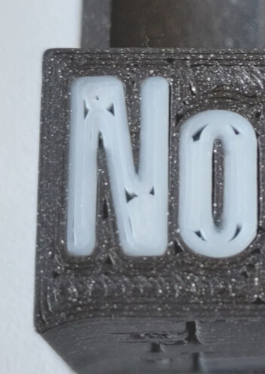3DPrinting
3DPrinting is a place where makers of all skill levels and walks of life can learn about and discuss 3D printing and development of 3D printed parts and devices.
The r/functionalprint community is now located at: or !functionalprint@fedia.io
There are CAD communities available at: !cad@lemmy.world or !freecad@lemmy.ml
Rules
-
No bigotry - including racism, sexism, ableism, homophobia, transphobia, or xenophobia. Code of Conduct.
-
Be respectful, especially when disagreeing. Everyone should feel welcome here.
-
No porn (NSFW prints are acceptable but must be marked NSFW)
-
No Ads / Spamming / Guerrilla Marketing
-
Do not create links to reddit
-
If you see an issue please flag it
-
No guns
-
No injury gore posts
If you need an easy way to host pictures, https://catbox.moe/ may be an option. Be ethical about what you post and donate if you are able or use this a lot. It is just an individual hosting content, not a company. The image embedding syntax for Lemmy is 
Moderation policy: Light, mostly invisible
view the rest of the comments

This is a fairly common complaint with the output produced by any slicer using the Arachne perimeter generator, which includes Prusa and its derivatives by default now, and also Cura.
If you are using Prusa or a derivative you can switch back from the Arachne perimeter generator to Classic in your "Layer and Perimeters" tab. If you can't stomach not using Arachne for whatever reason, you could try messing with the "Perimeter Transitioning Threshold Angle" setting. There is some additional wordage on all of the above here. TL;DR: The Arachne generator attempts to build perimeters out of variable line widths and explicitly does not go back and fill in tiny voids like these with a separate operation. The point is that it's not supposed to have to, but as you can see it doesn't always work out that way.
As others have pointed out, doing an ironing pass on your top layer may help conceal this from an aesthetic standpoint but won't do anything for you structurally (i.e. for anyone running into this issue with a shape they hope to be watertight). The nuclear option would be to instruct the slicer to do an ironing pass on every layer which may help your print look boss at the end of things but will certainly also take forever.
Yes I do use arachne. I did try to change it to classic when I was messing with my 3D-printed lens experiment, and while arachne wasn't perfect, it left fewer artifacts inside the "lens" than classic.
I'll try to revisit classic for this one print.
I'll try ironing, This one is purely an esthetic problem. The part is just a cover for a case that holds electronic bits inside.